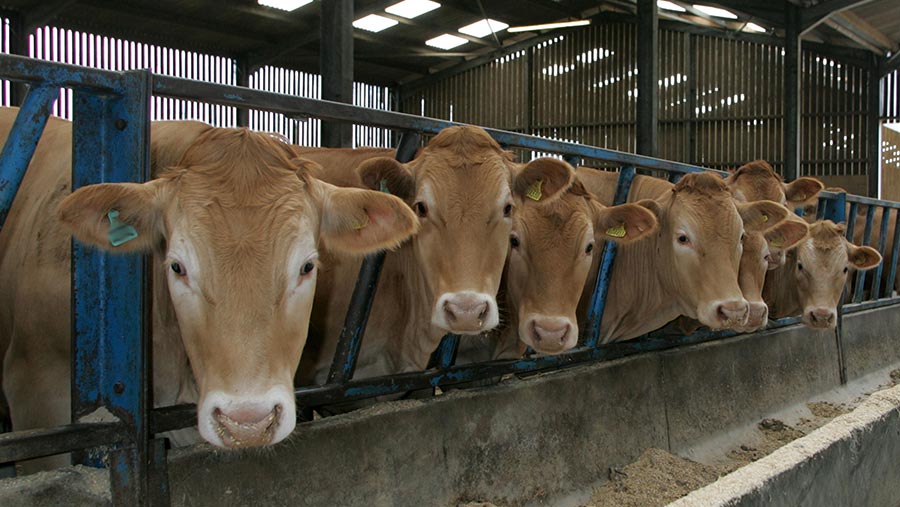Deadweight cattle prices edge above five-year average
 © Tim Scrivener
© Tim Scrivener Deadweight cattle prices have continued to rise this week, edging above the five-year average for the first time in 2020, according to AHDB figures.
For the week ended 30 May, the all-prime average rose to £3.45/kg, up by 7.5p/kg on the previous seven-day figure.
See also: Miscanthus: Can it tackle climate change and turn a profit?
In comparison, the five-year average was £3.43/kg for the end of May.
Cattle price rises were seen across the board (see table)
Prime price movements for the week ending 30 May |
||
| Cattle type | Price/kg | Increase on previous week |
| Overall steers | £3.45 | 9p |
| R4L steers | £3.56 | 7.8p |
| Overall young bulls | £3.43 | 9.7p |
| Overall heifers | £3.46 | 8p |
| R4L heifers | £3.56 | 8.3p |
| Overall average | £3.45 | 7.5p |
| Source: AHDB | ||
AHDB red meat analyst Rebecca Wright said prices had been supported throughout May with demand steady but supply tightening.
Total demand – retail and eating out – had suffered during April, but in May volumes were similar to May 2019, Ms Wright said.
The supply of prime cattle had largely been lower, and was expected to remain tighter, she added.
Estimated kill for the week totalled 31,300 head, down 1,700 head week-on-week.
“It is likely some of these cattle were brought forward due to concerns over the dry hot weather,” Ms Wright suggested.
Prime cattle were not alone in recording price rises.
The GB overall cow price rose 6p/kg on the week, to £2.47/kg.
Demand for cows may have been supported by the reopening of some fast food outlets for take-away and drive-through orders, she added.
Estimated cow kill increased by 500 head during the week to total 10,100 head.
GB herd contracts
Over the longer term, the GB cattle population has contracted compared with last year’s figure.
British Cattle Movement Service data for 1 April 2020 showed the number of 12-30-month-old prime cattle available for beef production was down by almost 75,000 head.
In the breeding herd the number of dairy females over 30 months was 49,000 head lower on 1 April this year compared with the same date in 2019.
It is a similar story with beef females over 30 months, down nearly 24,000 head on the year.
